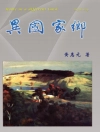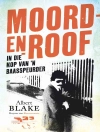This book offers the first in-depth study of one of the most gripping trials of inter-war Britain, that of farmer’s wife Beatrice Pace for the arsenic murder of her husband. A riveting tale from the golden age of press sensationalism, the book offers insights into the era’s justice system, gender debates and celebrity culture. Based on extensive research, it locates the Pace saga in the vibrant world of 1920s press reporting and illuminates a forgotten chapter in the history of civil liberties by considering the debates the case raised about police powers and the legal system.
Spanning settings from the Pace’s lonely cottage in the Forest of Dean to the House of Commons and using sources ranging from meticulous detective reports to heartfelt admirers’ letters, The most remarkable woman in England combines serious scholarship with vivid storytelling to bring to life the extraordinary lives of ordinary people between the wars.
Зміст
List of key figures involved in the Pace case
Introduction
1 The ‘Fetter Hill mystery’: the strange death of Harry Pace
2 ‘Where there are so many cruel tongues’: investigations and accusations
3 ‘I cannot tell you, sir – I cannot tell you’: mysteries and circumstances
4 ‘Easing the burden of the tragic widow’: the making of ‘Mrs Pace’
5 ‘Every wife in the country has opportunity’: the ‘tragic widow’ on trial
6 ‘The matter is dead’: a new life and some old shadows
7 ‘18 years of hell’: gender, marriage and violence
8 ‘Unimaginable agonies and degradations and cruelties’: justice, politics and poverty
9 ‘Those who have had trouble can sympathise with you’: Mrs Pace and her public
Conclusion
Postscript
Bibliography
Index
Про автора
John Carter Wood is a researcher at the Leibniz Institute of European History in Mainz, Germany and a Visiting Research Fellow at The Open University












